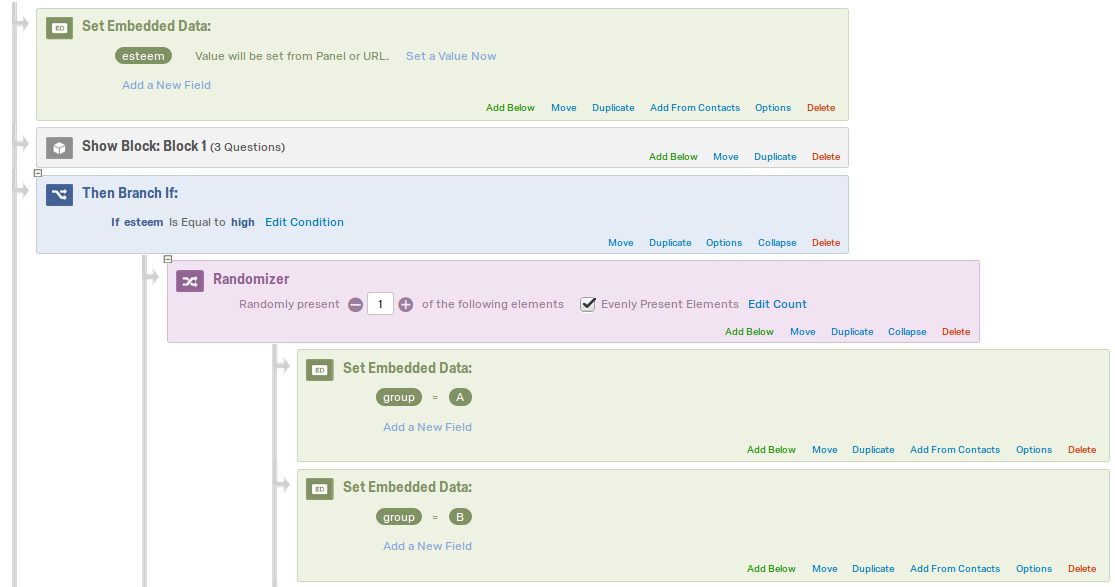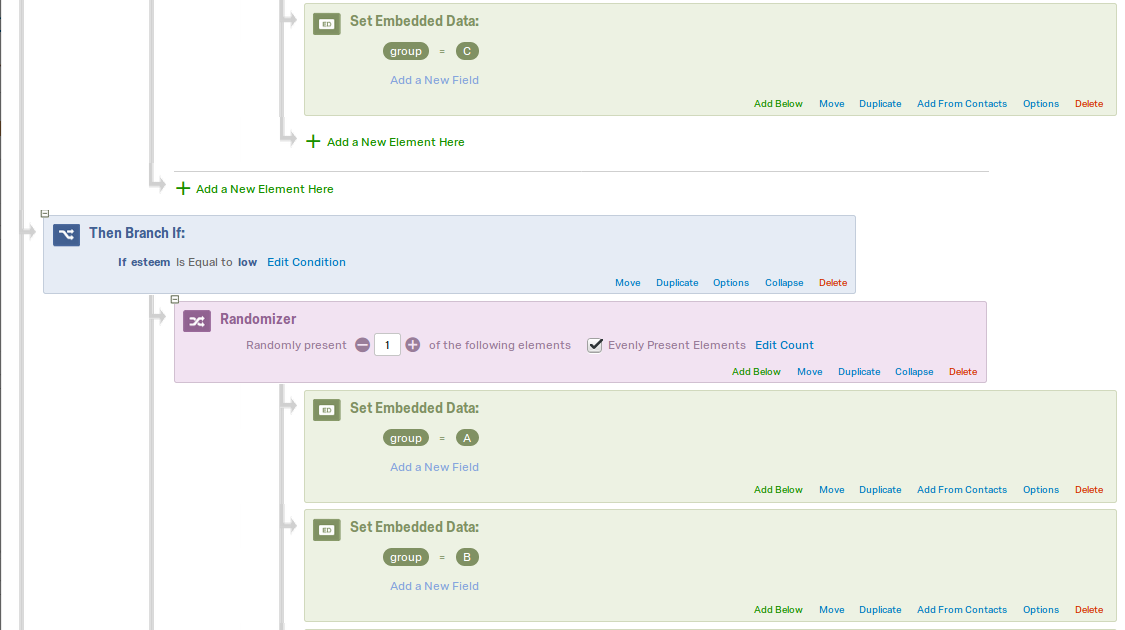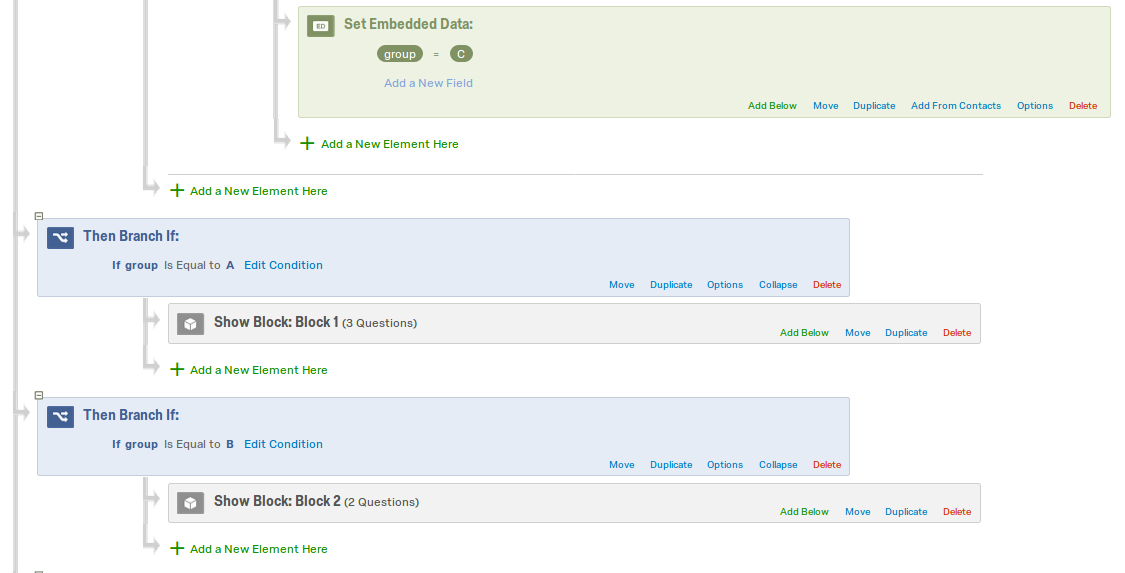For my master thesis I am using Qualtrics for a survey. I want to split my respondents into three groups that all have a percentage of high self-esteem people that is similar to the one general population (e.g. 15%).
The most common set of items to measure self-esteem has 10 items. Now, how can I score the results from these 10 items into one factor and use this value to assign the respondents to the three groups such that in the end, all three groups have similar distributions of high and low self-esteem people?
I have been unsuccessfully trying to find this out for a while now. Maybe someone can help? That would be fantastic!
Thank you and best wishes
Fred
Best answer by fleb
View original





